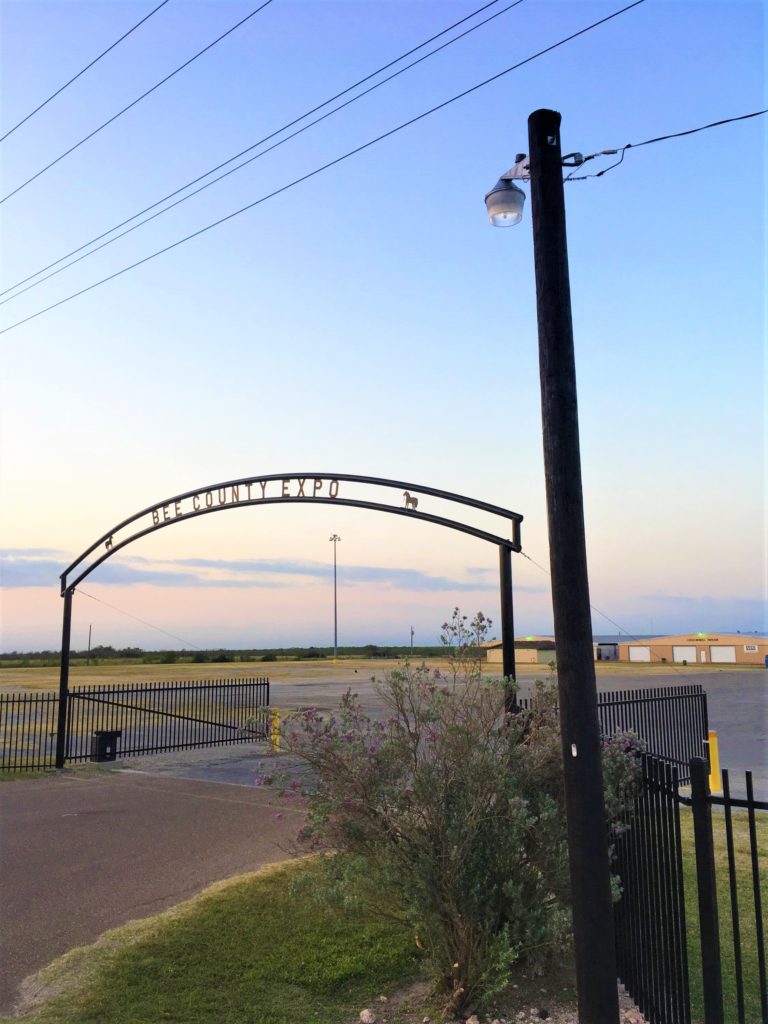Lighting Project Enhances Safety, Security
By Bee County Commissioner
Dennis DeWitt
 Light: to illuminate the dark. Sounds simple, but in rural areas of many counties in Texas there is no artificial light at night. In rural unincorporated areas, a light is a beacon in the night.
Light: to illuminate the dark. Sounds simple, but in rural areas of many counties in Texas there is no artificial light at night. In rural unincorporated areas, a light is a beacon in the night.
As County Commissioners in South Texas’ Bee County, Commissioner Ken Haggard and I were determined to establish safety and security lighting in our rural areas and unincorporated communities in our respective areas of responsibility. We studied the situation for many months while working with our Texas Department of Transportation partners, but to no avail. Cost, time and engineering created obstacles.
Then, the “light” went on: Why not contact the local electric service providers directly to see if they had procedures in place to furnish and install safety and security lighting in the unincorporated areas? Commissioner Haggard blazed the trail, and I quickly followed with my electrical providers.
Indeed, there was a way, but it would require several steps, time, and approvals.
First, we identified locations and presented them to Commissioners Court for initial concept approval. The Court established criteria to include the following:
• pole location must be on public right of way;
• an existing electrical pole must be available for the proposed light fixture to defer costs;
• dangerous or blind intersections;
• intersections on hills or curves; and
• intersections with heavy truck or other traffic and areas near schools or other public facilities.
Pole locations near residences were not strongly considered because of excessive light pollution into the residences.
Next, this detailed information was communicated with the electrical providers to obtain detailed costs and timelines. Another Commissioners Court meeting was necessary to facilitate discussion, approval, and funding.
Following approval, individual pole numbers and location information was communicated with the respective electrical providers and the service companies billing Bee County for electrical service. The providers and service companies coordinated the process to ensure billing was timely and accurate.
One provider required an ESID# (electrical services identifier unique point of service delivery 17- or 22-digit number) with pole numbers and a unique letter prefix to identify Bee County; for the other, utilizing identifying names and pole numbers was required. One provider required a county check be delivered to cover payment of fixtures and installation before a construction order would be issued.
Both service companies bill Bee County monthly for the lighting service, ranging from a few dollars to more than $20 depending on location and company.
This project started as a simple thought and has evolved into an important health and safety issue for Bee County residents and those passing though. Reactions have been both positive and interesting. For example, one resident asked, “Why hasn’t this been done before?”
Another individual commented he was against the light in his community because he could not sneak into his girlfriend’s house without being seen. Another questioned the expense until it was pointed out the lighting benefits everyone – rich, poor, young, and senior – basically anyone who drives, rides, or walks in these areas.
First responders, the sheriff’s office, and the electrical service providers are praising the project as they routinely make emergency calls into the dark unincorporated areas; they are especially thankful during fog or rainy weather.
To date, approximately 40 locations have been established and are in various stages of completion. Additional locations will be forthcoming as additional intersections are identified as health and safety hazard areas, and as funding becomes available. The electrical providers and our billing company enthusiastically support the project and have been incredible to work with.
As you drive through the unincorporated communities of Bee County – Skidmore, Pettus, Normanna, Tuleta, Pawnee, and Mineral – be mindful of the folks traveling after dark in those areas and how the nights are much safer because of this simple lighting project, which began with the determination of two County Commissioners to provide a safer more secure environment in their areas of responsibility.









